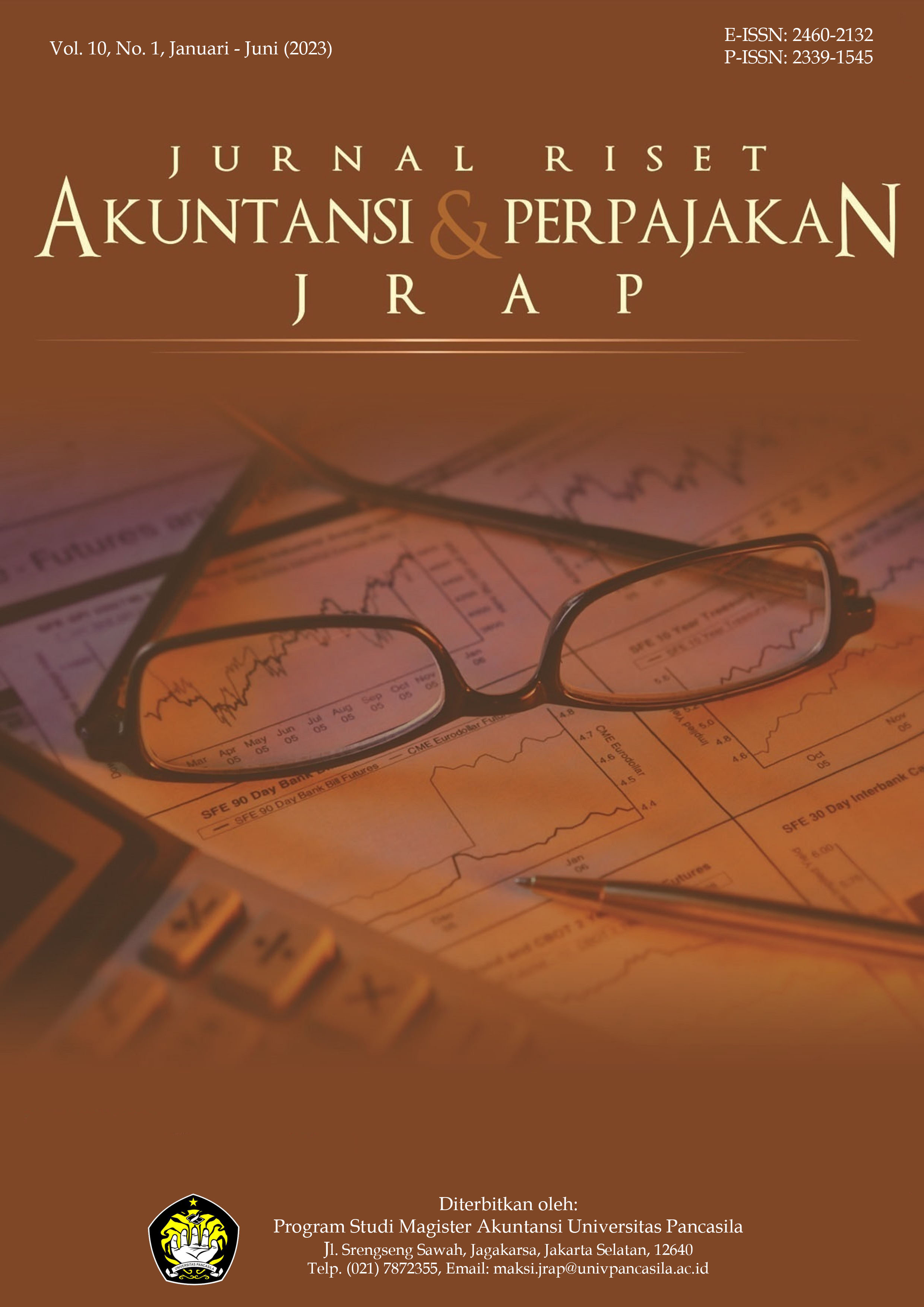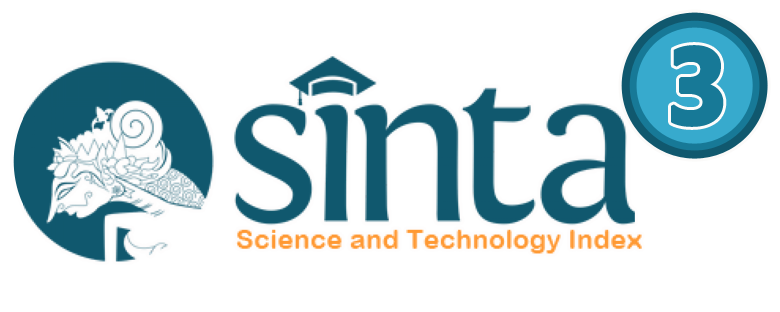Basis Pemajakan Konsumsi dan Penghasilan: Perspektif Pemerintah dan Wajib Pajak
Abstract views: 916 | PDF downloads: 1157
Abstract
In taxation, there are two frequently used tax based, income and consumption. According to Indonesia’s tax ratio data, Indonesiaia is still heavily relying to tax income in the form of value added taxes (consumption-based). This study attempts to see which tax base is better in taxpayer’s and government’s perspective. Consumption-based taxation is limited to value added taxes and consumption is limited to household consumption. Meanwhile, income-based taxation is limited to personal income taxes and income is limited to household income. Methods used in this study is mixed method, by doing descriptive study and grounded theory. Discussion is based on the function of taxes, which is budgetair, regulerend, stability, and income redistribution. This study shows that consumption-based taxation is better for government and income-based taxation is better for taxpayer. But, with the rise on income-based taxation, the government will be able to gain additional benefit in the future. Therefore, the government must pay more attention to income-based taxation.
References
Alavuotunki, K., Haapanen, M., & Pirttilä, J. (2019). The effects of the value-added tax on revenue and inequality. Journal of Development Studies, 55(4), 490–508. https://doi.org/10.1080/00220388.2017.1400015
Alfirman, L., Woroutami, A. D., Aulia, A. F., Afkar, R., Jellema, J., & Wai-Poi, M. (2015). Taxes & public spending in Indonesia: Who pays and who benefits? World Bank. https://documents1.worldbank.org/curated/en/167241468196450488/pdf/101667-WP-PUBLIC-Box394818B-Background-Paper-Taxes-and-Public-Spending.pdf
Andito, D. (2015). Tinjauan atas pelaksanaan perhitungan pajak penghasilan pasal 23 pada PT. INTI Bandung. Universitas Komputer Indonesia.
Bachas, P., Gadenne, L., & Jensen, A. (2020). Informality, consumption taxes, and redistribution. NBER Working Paper, 27429. https://doi.org/10.3386/w27429
Badan Pusat Statistik. (n.d.-a). Istilah. Diakses tanggal 4 Februari 2023, dari https://www.bps.go.id/istilah/index.html?Istilah%5Bberawalan%5D=P&Istilah_page=7#:~:text=Pendapatan%20rumah%20tangga%20adalah%20pendapatan,pendapatan%20anggota%2Danggota%20rumah%20tangga.
Badan Pusat Statistik. (2023). Rumah Tangga dan Rata-rata Banyaknya Anggota Rumah Tangga Menurut Provinsi, 2019. Diakses tanggal 4 Februari 2023, dari https://www.bps.go.id/indikator/indikator/view_data_pub/0000/api_pub/bmc3elVuWGROc3JRL3RPQTBrU2dadz09/da_03/1
Badan Pusat Statistik. (2023). Tabel dinamis. Diakses tanggal 4 Februari 2023, dari https://www.bps.go.id/site/pilihdata
Badan Pusat Statistik. (2021). Ringkasan eksekutif pengeluaran dan konsumsi penduduk Indonesia, Maret 2021. https://www.bps.
go.id/publication/download.html?nrbvfeve=OTNlY2JkNWViNzlkMDEyYjlkOTI5ZDc3&xzmn=aHR0cHM6Ly93d3cuYnBzLmdvLmlkL3B1YmxpY2F0aW9uLzIwMjEvMTAvMjkvOTNlY2JkNWViNzlkMDEyYjlkOTI5ZDc3L3JpbmdrYXNhbi1la3Nla3V0aWYtcGVuZ2VsdWFyYW4tZGFuLWtvbnN1bXNpLXBlbmR1ZHVrLWluZG9uZXNpYS0tbWFyZXQtMjAyMS5odG1s&twoadfnoarfeauf=MjAyMy0wMi0wNyAwMDowNjoyMQ%3D%3D
Badan Pusat Statistik. (2022). Neraca rumah tangga Indonesia tahun 2019-2021. https://www.bps.go.id/publication/download.html?nrbvfeve=YWQ5ODk5NDQ0MDRmZjQzNWJmNTNkZDQ2&xzmn=aHR0cHM6Ly93d3cuYnBzLmdvLmlkL3B1YmxpY2F0aW9uLzIwMjIvMTAvMzEvYWQ5ODk5NDQ0MDRmZjQzNWJmNTNkZDQ2L25lcmFjYS1ydW1haC10YW5nZ2EtaW5kb25lc2lhLXRhaHVuLTIwMTktMjAyMS5odG1s&twoadfnoarfeauf=MjAyMy0wMi0wNyAwMDoxMTozOQ%3D%3D
Bankman, J., & Weisbach, D. A. (2005). The superiority of an ideal consumption tax over an ideal income tax. Stanford Law Review, 58(5), 1413–1456. https://www.
jstor.org /stable/40040312
Bâzgan, R.-M. (2018). The impact of direct and indirect taxes on economic growth: An empirical analysis related to Romania. Proceedings of the International Conference on Business Excellence, 12(1), 114–127. https://doi.org/10.2478/picbe-2018-0012
Direktorat Jenderal Pajak. (n.d.). Fungsi Pajak. Diakses tanggal 23 November 2022, dari https://www.pajak.go.id/id/fungsi-pajak
Đorđević, M. (2015). Satisfying the Principle of Fairness in Consumption Tax. Economic Themes, 53(1), 37–50. https://doi.org/10.1515/ethemes-2015-0003
Farrar, J., Massey, D. W., Osecki, E., & Thorne, L. (2021). The association between vertical equity and presidential voting behavior and taxpayers’ compliance. Journal of Business Ethics, 172(1), 101–114. https://doi.org/10.1007/s10551-020-04453-0
Firmansyah, R. A., & Wijaya, S. (2022). Natura dan kenikmatan sebelum dan sesudah Undang-Undang Harmonisasi Peraturan Perpajakan. Jurnal Pajak Dan Keuangan Negara (PKN), 3(2), 343–359. https://doi.org/10.31092/jpkn.v3i2.1645
Franzese, M., & Iuliano, A. (2019). Descriptive statistics. In Encyclopedia of Bioinformatics and Computational Biology (pp. 672–684). Elsevier. https://doi.org/10.1016/B978-0-12-809633-8.20354-3
Friedman, M. (1957). A theory of the consumption function. Princeton University Press. http://www.nber.org/books/frie57-1
Gashi, B., Asllani, G., & Boqolli, L. (2018). The effect of tax structure in economic growth. International Journal of Economics and Business Administration, VI(2), 56–67. https://www.um.edu.mt/library/oar//handle/123456789/43727
Gasior, K., Leventi, C., Noble, M., Wright, G., & Barnes, H. (2018). The distributional impact of tax and benefit systems in six African countries (WIDER Working Paper, Vol. 2018). UNU-WIDER. https://doi.org/10.35188/UNU-WIDER/2018/597-8
Gluckman, A., & Turner, M. (2018). The perceived fairness of turnover tax. Journal of Economic and Financial Sciences, 11(1). https://doi.org/10.4102/jef.v11i1.174
Hansen, G., & İmrohoroğlu, S. (2018). Replacing income taxation with consumption taxation in Japan. Journal of the Japanese and International Economies, 48, 15–28. https://doi.org/10.1016/j.jjie.2017.10.001
Korkmaz, S., Yilgor, M., & Aksoy, F. (2019). The impact of direct and indirect taxes on the growth of the Turkish economy. Public Sector Economics, 43(3), 311–323. https://doi.org/10.3326/pse.43.3.5
Kusumawardani, P. P. O., Damayanty, S. A., Hariputro, B. R., Setiawan, H., Hidayat, W., Iskandarsyah, N., Kiswanto, J., Handoko, R., Nugraeni, U., Widianto, Y. W., Febriyadi, M., Harianja, D. T., Cahyokusumo, H., & Maharani, S. A. (2022). Laporan belanja perpajakan 2021. https://fiskal.kemenkeu.go.id/files/ter/file/1672019687_ter-2021.pdf
Laura, U. A. (2019). Impact of indirect taxation on economic growth in Nigeria. International Journal of Advanced Engineering Research and Science, 6(5), 54–61. https://doi.org/10.22161/ijaers.6.5.8
Makohon, V. (2021). Influence of budget policy on economic growth of the country. Financial and Credit Activities: Problems of Theory and Practice, 1(36), 243–249. https://fkd.net.ua/index.php/fkd/article/download/3105/3142
Martorano, B. (2018). Taxation and inequality in developing countries: Lessons from the recent experience of Latin America. Journal of International Development, 30(2), 256–273. https://doi.org/10.1002/jid.3350
Mdanat, M. F., Shotar, M., Samawi, G., Mulot, J., Arabiyat, T. S., & Alzyadat, M. A. (2018). Tax structure and economic growth in Jordan, 1980-2015. EuroMed Journal of Business, 13(1), 102–127. https://doi.org/10.1108/EMJB-11-2016-0030
Musgrave, R. A. (1993). Progressive taxation, equity and tax design. The Office of Tax Policy Research. http://www.bus.umich.edu/otpr/papers/1993-9.PDF
Neog, Y., & Gaur, A. K. (2020). Tax structure and economic growth: A study of selected Indian states. Journal of Economic Structures, 9(1), 1–12. https://doi.org/10.1186/s40008-020-00215-3
Nmesirionye, J., Jones, E., & Sarah, O. (2019). Impact of indirect taxes on economic performance of Nigeria (1994-2017). European Journal of Accounting, Finance and Investment, 5(4), 3466–7037.
Noble, H., & Mitchell, G. (2016). What is grounded theory? Evidence Based Nursing, 19(2), 34–35. https://doi.org/10.1136/eb-2016-102306
Organisation for Economic Co-operation and Development. (n.d.). Revenue statistics in Asia and the Pacific 2022-Indonesia. Retrieved November 23, 2022, from https://www.oecd.org/tax/tax-policy/revenue-statistics-asia-and-pacific-indonesia.pdf
Organisation for Economic Co-operation and Development. (2014). The distributional effects of consumption taxes in OECD countries. OECD Tax Policy Studies, 22. https://doi.org/10.1787/9789264224520-en
Organisation for Economic Co-operation and Development. (2020). Consumption Tax Trends 2020. OECD. https://doi.org/10.1787/152def2d-en
Putra, A. F. (2017). Pengaruh etika, sanksi pajak, modernisasi sistem, dan transparansi pajak terhadap kepatuhan pajak. Jurnal Akuntansi Indonesia, 6(1), 1. https://doi.org/10.30659/jai.6.1.1-12
Qudratovich, K. B. (2021). Reasonable organization of direct and indirect taxation ways to develop the economy of Uzbekistan. International Journal on Economics, Finance and Sustainable Development, 3(8), 9–17. https://doi.org/10.31149/ijefsd.v3i8.2085
Rahayu, P., & Suaidah, I. (2022). Pengaruh keadilan, perilaku, persepsi enerapan Undang-Undang Harmonisasi Peraturan Perpajakan terhadap kepatuhan wajib pajak. Ekonomi, Keuangan, Investasi Dan Syariah (EKUITAS), 3(4), 939–945. https://doi.org/10.47065/ekuitas.v3i4.1553
Republik Indonesia. (2021). Undang-Undang Nomor 7 Tahun 2021 tentang Harmonisasi Peraturan Perpajakan.
Saunders, M., Lewil, P., & Thornhil, A. (2012). Research methods for business students (edisi ke-6). Pearson.
Seelkopf, L., & Lierse, H. (2020). Democracy and the global spread of progressive taxes. Global Social Policy, 20(2), 165–191. https://doi.org/10.1177/1468018120911567
Shaviro, D. (2007). Beyond the pro-consumption tax consensus. Stanford Law Review, 60(3), 745–788. https://www.jstor.org/stable/40040364
Siedlecki, S. L. (2020). Understanding descriptive research designs and methods. Clinical Nurse Specialist, 34(1), 8–12. https://doi.org/10.1097/NUR.0000000000000493
Thaçi, L., & Gërxhaliu, A. (2018). Tax structure and developing countries. European Journal of Economics and Business Studies, 4(1), 213–220. https://doi.org/10.26417/ejes.v4i1.
p213-220
Wai-Poi, M., Alatas, H., Indrakesuma, T., Janz, E., Lain, J., Purnamasari, R., Tiwari, S., & Uochi, I. (2019). Aspiring Indonesia: Expanding the middle class. World Bank. https://openknowledge.worldbank.org/bitstream/handle/10986/33237/Aspiring-Indo nesia-Expanding-the-Middle-Class.pdf?sequence=1&isAllowed=y
Warren, A. (1980). Would a consumption tax be fairer than an income tax? The Yale Law Journal, 89(6), 1081–1124. https://doi.org/10.2307/796024
Wicaksono, E., Nugroho, S. S., & Woroutami, A. D. (2020). Pola konsumsi dan beban PPN kelas menengah Indonesia. Kajian Ekonomi Dan Keuangan, 4(1), 1–16. https://doi.org/10.31685/kek.v4i1.506
Copyright (c) 2023 Yulifar Amin Gultom

This work is licensed under a Creative Commons Attribution-ShareAlike 4.0 International License.
Authors who publish with this journal agree to the following terms:
- Authors retain copyright and grant the journal right of first publication with the work simultaneously licensed under a Creative Commons Attribution-ShareAlike 4.0 International License that allows others to share the work with an acknowledgement of the works authorship and initial publication in this journal.
- Authors are able to enter into separate, additional contractual arrangements for the non-exclusive distribution of the journals published version of the work (e.g., post it to an institutional repository or publish it in a book), with an acknowledgement of its initial publication in this journal.
- Authors are permitted and encouraged to post their work online (e.g., in institutional repositories or on their website) prior to and during the submission process, as it can lead to productive exchanges, as well as earlier and greater citation of published work (See The Effect of Open Access).














